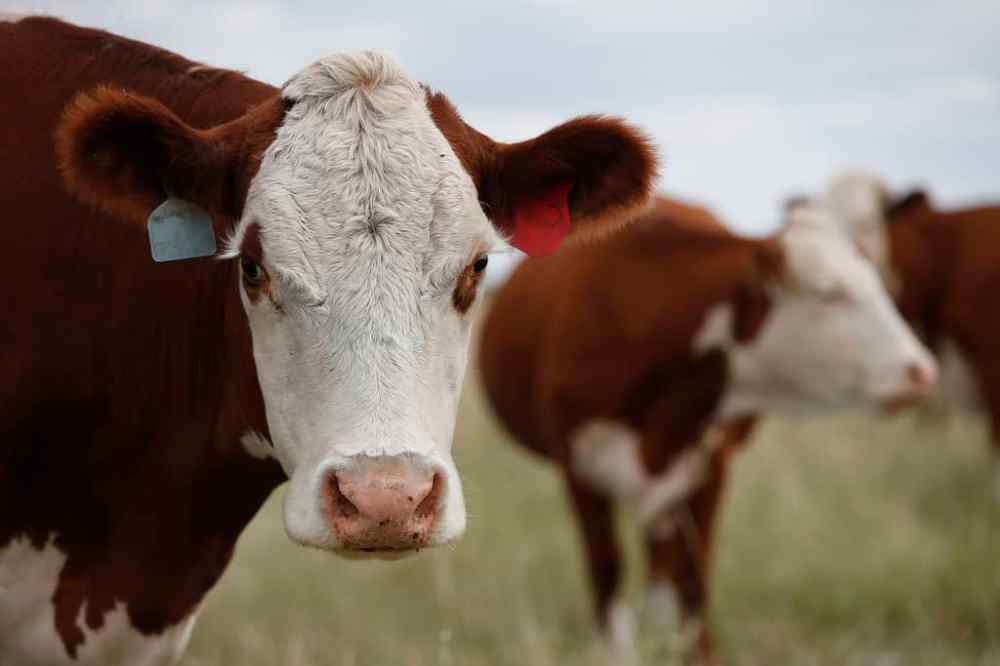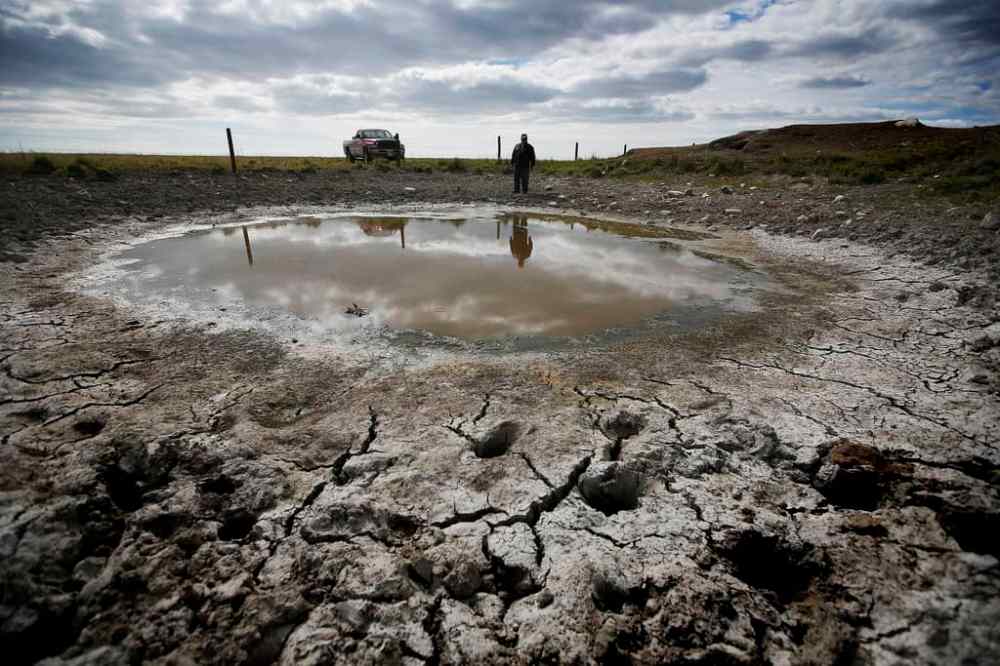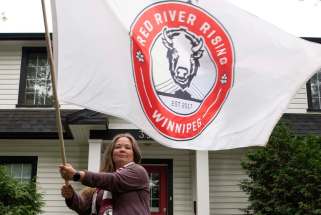Down in the drought Lack of precipitation puts added pressure on Manitoba farmers
Read this article for free:
or
Already have an account? Log in here »
To continue reading, please subscribe:
Monthly Digital Subscription
$0 for the first 4 weeks*
- Enjoy unlimited reading on winnipegfreepress.com
- Read the E-Edition, our digital replica newspaper
- Access News Break, our award-winning app
- Play interactive puzzles
*No charge for 4 weeks then price increases to the regular rate of $19.00 plus GST every four weeks. Offer available to new and qualified returning subscribers only. Cancel any time.
Monthly Digital Subscription
$4.75/week*
- Enjoy unlimited reading on winnipegfreepress.com
- Read the E-Edition, our digital replica newspaper
- Access News Break, our award-winning app
- Play interactive puzzles
*Billed as $19 plus GST every four weeks. Cancel any time.
To continue reading, please subscribe:
Add Free Press access to your Brandon Sun subscription for only an additional
$1 for the first 4 weeks*
*Your next subscription payment will increase by $1.00 and you will be charged $16.99 plus GST for four weeks. After four weeks, your payment will increase to $23.99 plus GST every four weeks.
Read unlimited articles for free today:
or
Already have an account? Log in here »
Hey there, time traveller!
This article was published 06/07/2021 (1615 days ago), so information in it may no longer be current.
The pastures and haylands around St. Laurent are bone dry and grasshoppers are eating what little green grows.
If a soaker of a rainstorm doesn’t come soon, it might be the death knell of the few family farmers left in the southern Interlake, says cattle producer Tom Johnson.
He grew up on the rocky 2,500 acres his grandfather bought in 1928 near Oak Point, 90 kilometres northwest of Winnipeg. His land is a stone’s throw from Lake Manitoba, a place where three generations have raised cattle and made a living.
“Guys are drilling wells and getting solar pumps to set up for (livestock) to drink… We could use three inches of rain here where I am, and the next day you wouldn’t even see it. It would be gone,” said Johnson, 63.
“Everything’s going to s— in a showboat right quick. We’re going downhill fast.”
Rural Municipality of St. Laurent Reeve Cheryl Smith said the region has had about 40 per cent of the precipitation it does in a normal year.
It declared an agricultural state of disaster Monday, a move more RMs in the Interlake are expected to follow amid little rainfall and extensive insects feeding on crops.
Losing family farms would hurt the community — culturally and its tax base — Smith said. But it’s not just St. Laurent farmers that are facing dire circumstances in the recent extreme heat and lack of rain.
Across southern Manitoba, livestock and crops are aching for water and a reprieve from the scorching heat.
“When we start to see some of the crops regress, with regards to their lush leaves, and some of that part of it, it causes concern about the ability to yield, and it has caused I would say irreversible damage to the crops,” Keystone Agricultural Producers president Bill Campbell told the Brandon Sun this week.
Although “significant rainfall” would allow some crops the ability to “bounce back somewhat,” he said they’ll never bounce back to what they might have been if not for drought conditions.

Cattle producers in western Manitoba are deciding whether to thin their herds.
Walking through his field Saturday, Miniota area cattle farmer Ryan Canart said the grass around him was burning up.
“It’s not looking pretty. I think hay and feed is going to be worth a lot of money in the fall and a lot of guys looking to downsize cattle herds or selling or whatever,” he told the Sun.
South of Brandon, Keystone vice-president Jake Ayre said the area he farms has had well-below average rainfall, but agricultural producers are always working under the whims of the weather.
“Maybe we get two inches (of rain) next week or four tomorrow. It’s the name of the game we’re in,” Ayre said.
He said the provincial and federal supports and resources for producers are adequate; farmers are getting the help they need. But they still need help from Mother Nature.
Interlake farmers, with little water in wells or dugouts and no hay to cut, are now deciding whether to spend cash they don’t have to spare on new wells and freighting in expensive hay — or to just sell their cattle or sheep.
Johnson said one bale costs about $150 to $200 right now, plus the cost of trucking it in.

“The farmers will just dump their cows. Some have already started dumping. The cattle will be gone out of the area — who knows if they’ll come back? The little guys like us are really going to hurt,” said Johnson, who runs a cow-and-calf operation with 125 animals and cuts hay.
“I don’t know what a steak would cost if all these guys went out and down the road.”
Johnson said farmers need more support.
“They got to do something if they want to keep us around,” he said of potential support for hay costs and well drilling from the province and federal governments.
The province announced water management supports and resources Monday, and its hay listing service is active.
One of Johnson’s three sons plans to take over the family farm; instead of leaving for work on the pipelines, he stayed this summer. The father and son jerry-rigged water troughs and drilled wells — two this year.
It’ll be 100 years of Johnsons on the land in 2028, if they can make it that far.
The industry has dwindled in St. Laurent, the elder Johnson said. When he was a child, everyone had cattle. Now there’s a handful of small family operations and bigger producers dotting the area.
There’s one dairy farm; there used to be a dozen.
Ayre, who grows wheat, barley and other cash crops, thinks the family farm won’t die in the keystone province, even if it’s a tough year.
“I truly feel for producers who are stressed,” he said of the hardship of bad weather. “(But) we’ve seen younger producers come back in Manitoba. There’s a generation coming back to farming.”
— with files from Brandon Sun
erik.pindera@freepress.mb.ca

Erik Pindera reports for the city desk, with a particular focus on crime and justice.
Our newsroom depends on a growing audience of readers to power our journalism. If you are not a paid reader, please consider becoming a subscriber.
Our newsroom depends on its audience of readers to power our journalism. Thank you for your support.
History
Updated on Tuesday, July 6, 2021 7:22 PM CDT: Updates photos.
Updated on Tuesday, July 6, 2021 7:31 PM CDT: Updates bg photo
Updated on Tuesday, July 6, 2021 7:38 PM CDT: Updates web headline







